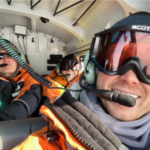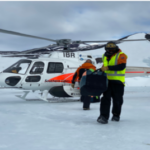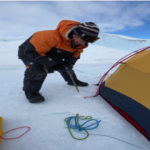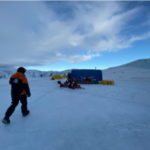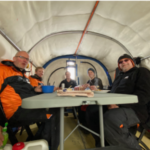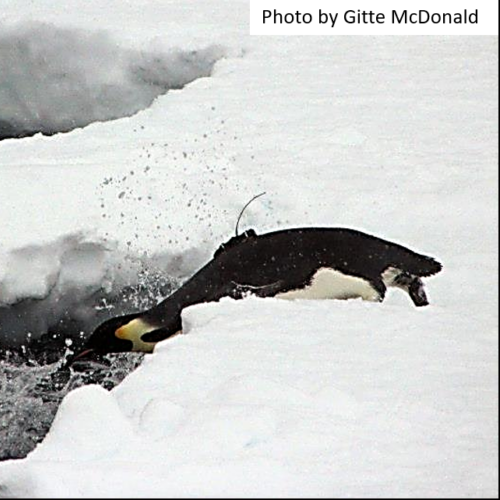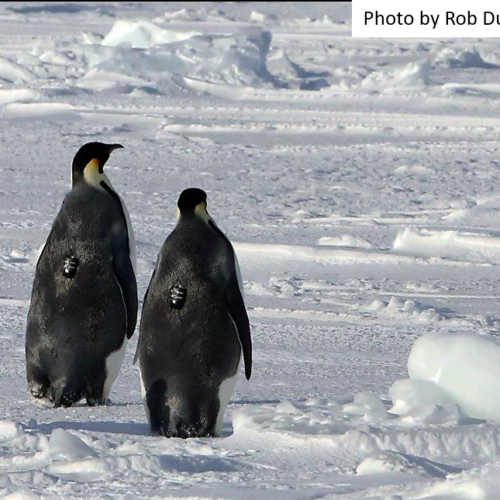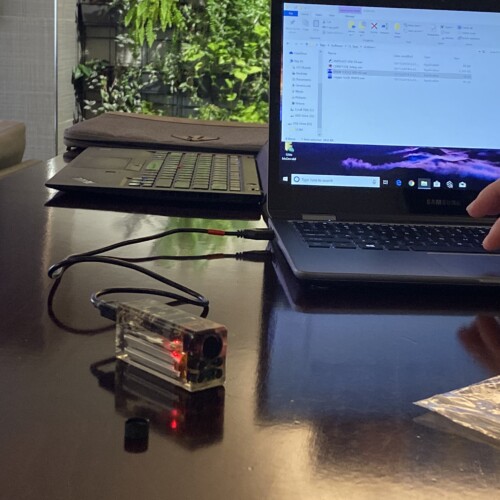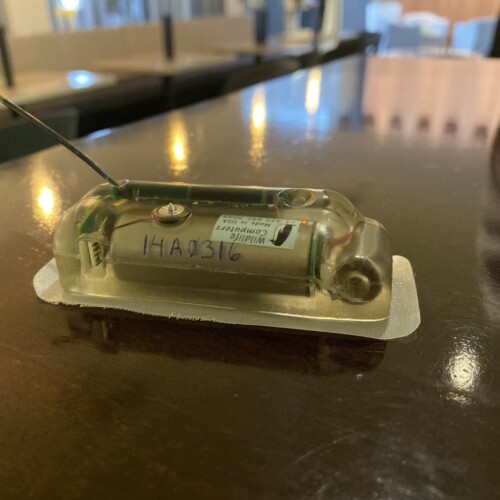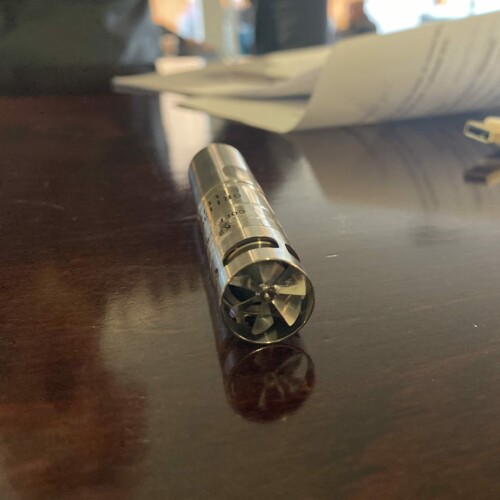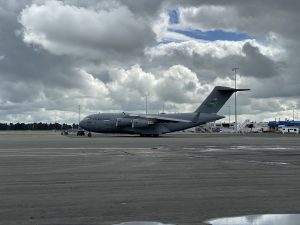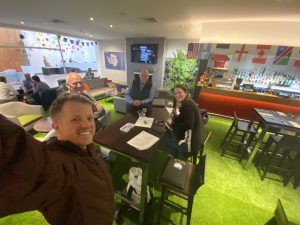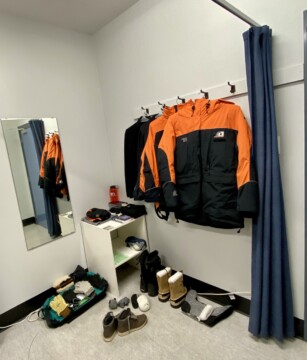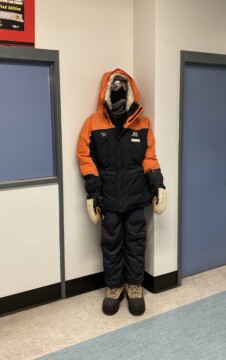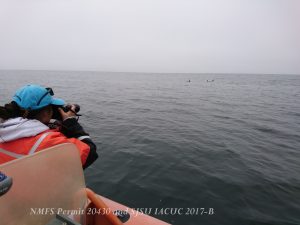Camp Set up at Crozier also known as “Camp Huddle”
Gitte’s penguin team successfully arrived at Cape Crozier on October the 28th. Our field notes may be a little behind as they are being carried out by gracious visitors who are kind enough to carry our messages back to civilization. Early in the morning the penguin team took flight in a helicopter piloted by Heff a stoic man with many years of experience flying in Antarctica. The flight from Scott Base to Cape Crozier took about 30 minutes and we had incredible views of Mt. Erebus (12,448 ft, 3794 m). We started to gain elevation as we flew over a glacier and wrapped around a bend. Heff agilely redirected the helicopter as we dropped off the glacier and back onto the sea ice. That is when Parker and David saw their first Antarctic penguin: the mighty Adele. The land side of Cape Crozier happens to be the location of one of the largest Adele colonies. I would love to google the exact number maybe those of you reading this blog can fill that bit of information for me (my best guess is ~250,000). We also saw our first emperor penguins walking and tobogganing on the ice (more information will follow with regards to how amazing these penguins are in future updates). I digress, Heff quickly turned the helicopter and the location of our Camp was first seen. Camp Huddle is located in a “finger” (a small cove located between where fast ice and sea ice meet) of fast ice. This location is relatively protected compared to other areas but the surrounding deep blue ice indicates that this area does receive heavy winds but not on a nice day like today. The weather was perfect for setting up our camp with high visibility and relatively warm temperatures at -7 degrees Celsius.
We set up camp five polar haven tents for each of five members of the crew including Sam who is helping us establish a safe camp and walk way to the colony. We erected a medium “Polar Haven” which has a heater and is the area we will be spending most of our time when it is cold. We a great kitchen set up and a nice table that serves multiple uses such dining table and data entry portal. We also set up a bathroom tent which is a classic Scott Tent. Since we are camping on sea ice all of the structures we have at Camp Huddle required us to drill holes on the ice and anchor each corner via “V thread” method as Gitte is demonstrating in the adjacent image. The basic concept of V threading requires two drill holes that connect in the ice. A rope is then place through the opening of both drilled holes and is fastened to the corner and sides of each structure. If you thought setting up a tent was difficult on land, consider drilling 230 V thread and hand tying each knot. Luckily the weather was great and we did not have to set up camp in the wind. Cape Crozier is notoriously experiencing some of the most extreme weather on the planet. Camp Huddle is fasted to the ice at Cape Crozier and we are ready to start our penguin captures within the next few days. We had a wonderful first dinner and headed to bed exhausted and excited to finally arrive at our destination.
#Natgeoexplorer #NIWA
Huddled Up,
Penguin Field Crew


